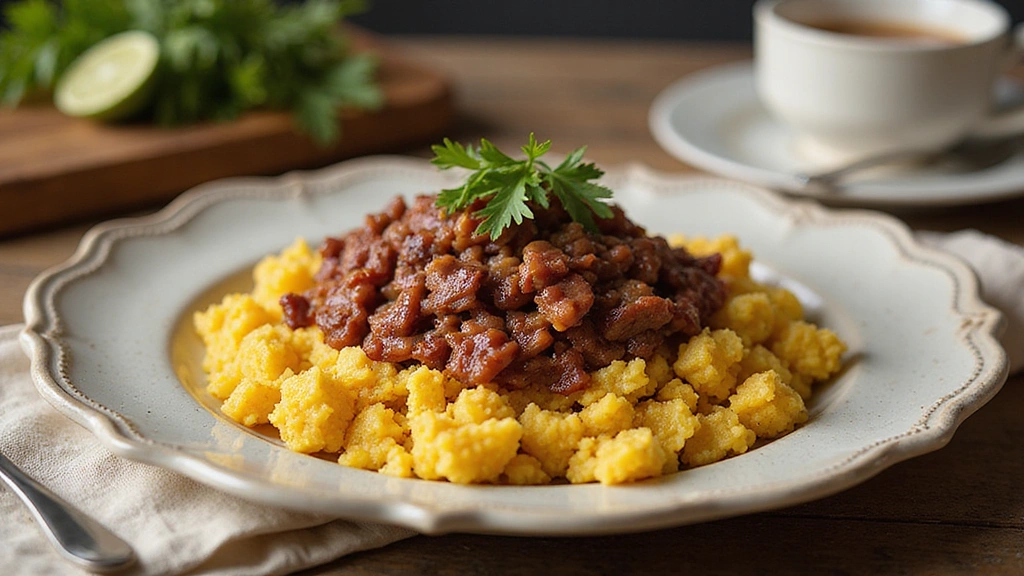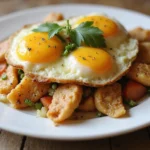Canned corned beef recipes are a nostalgic nod to comfort food, often evoking fond memories of family breakfasts and hearty meals.
The savory flavors meld beautifully with a variety of ingredients, creating a dish that is both satisfying and versatile.
I first encountered this delightful breakfast dish during a chilly morning in an Irish pub, where the warmth of the food perfectly complemented the atmosphere.
Whether it’s a lazy Sunday brunch or a quick weekday breakfast, this recipe offers a delicious way to start your day.
The History and Cultural Significance
• Canned Corned Beef Recipes Breakfast Savory Comfort Food traces its origins to Irish and British culinary traditions, where corned beef became popular in the 19th century.
• The dish evolved over decades as it was embraced by various cultures, particularly in America, where it became a staple during the Great Depression and World War II due to its affordability and long shelf life.
• In many Irish-American households, this dish traditionally appears on St. Patrick’s Day, symbolizing heritage and familial gatherings.
• While many variations exist across different regions, the authentic version maintains the use of canned corned beef as a key ingredient, providing a unique flavor and texture that sets it apart from fresh beef dishes.
Recipe Overview
Nutritional Information (per serving)
Ingredients
Essential Equipment Guide
Cast Iron Skillet: A cast iron skillet is essential for achieving a crispy texture on the corned beef hash. It retains heat remarkably well, allowing for even cooking and browning. If you don’t have one, a non-stick skillet can be used, but it may not give the same depth of flavor.
Spatula: A sturdy spatula is vital for flipping and mixing the corned beef hash without breaking it apart. Look for a spatula with a wide surface area to effectively lift large portions. A silicone spatula can also help prevent sticking.
Mixing Bowl: You’ll need a mixing bowl to combine the ingredients before cooking. A medium-sized bowl is ideal for comfortably mixing without spilling. Opt for a sturdy, non-breakable material to withstand vigorous mixing.
Preparation Methods
Parboiling Potatoes: This technique involves boiling the cubed potatoes until just tender before frying. It ensures that the potatoes cook evenly and thoroughly in the hash. To master this, aim for a fork-tender consistency, but avoid overcooking to prevent mushiness.
Caramelizing Onions: Slowly cooking onions over medium heat allows their natural sugars to develop and enhances their sweetness. Stir frequently, and watch for a golden-brown color, which indicates they are ready to add to the hash.
Frying for Crispiness: Frying the hash in a hot skillet is key for achieving the desired crispy texture. Ensure your skillet is hot enough before adding the ingredients to maximize browning, and let them sit undisturbed for a few minutes before stirring.
Step 1: Prepare Potatoes
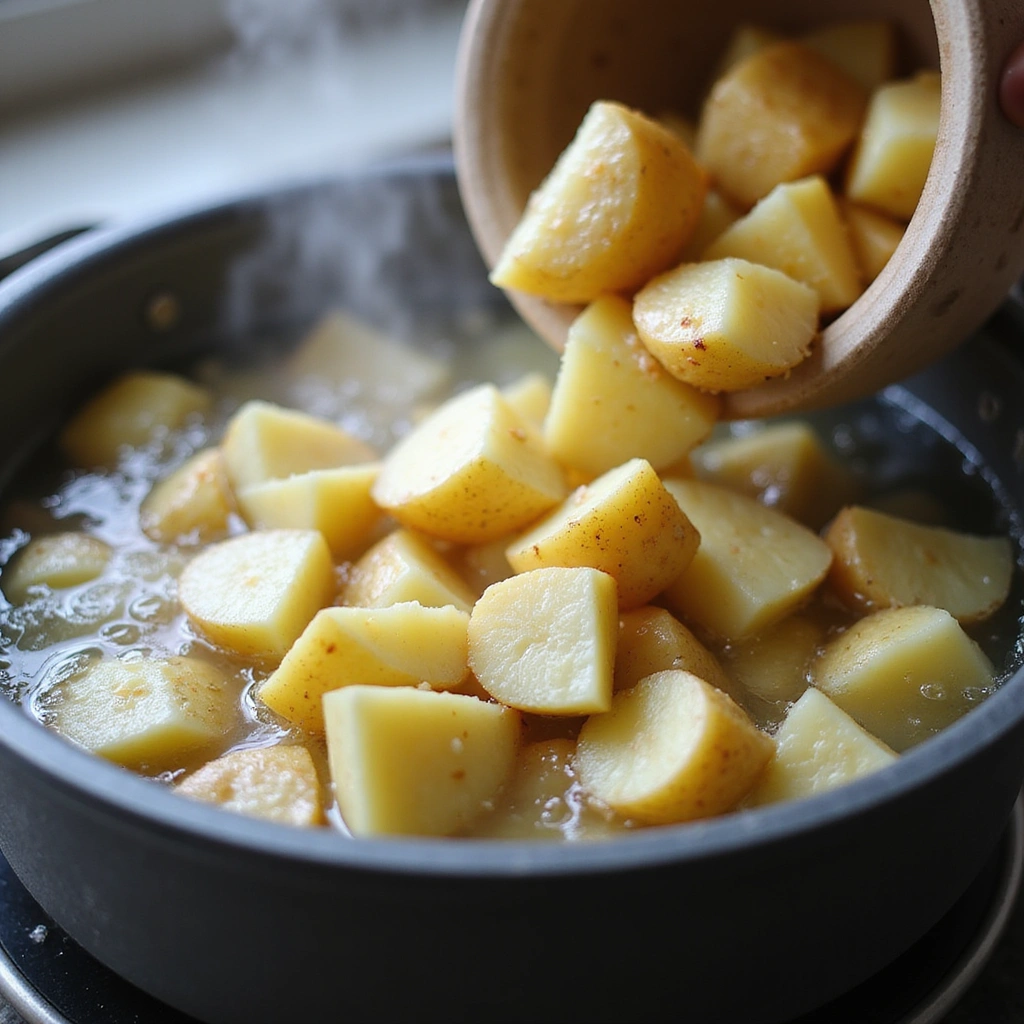
Start by peeling and cubing the potatoes into small, even pieces.
Place them in a pot of cold, salted water and bring to a boil.
Once boiling, let them cook until fork-tender, about 8-10 minutes.
Drain and set aside to cool slightly before adding to the skillet.
Step 2: Cook Onions and Peppers
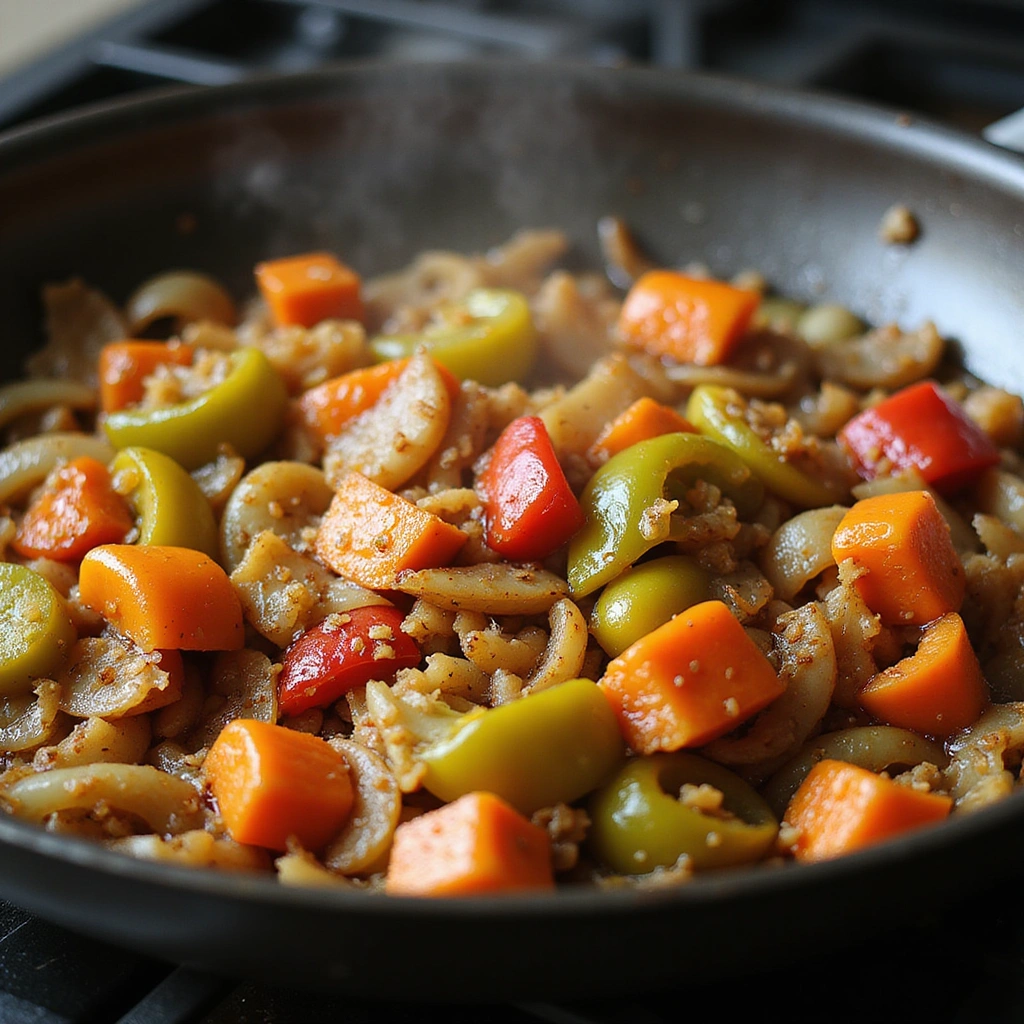
In a cast iron skillet, heat a tablespoon of oil over medium heat.
Add the diced onions and bell peppers, stirring occasionally to prevent burning.
Cook until the onions are soft and caramelized, which should take about 5-7 minutes.
The mixture should be fragrant and have a light golden color.
Step 3: Add Corned Beef
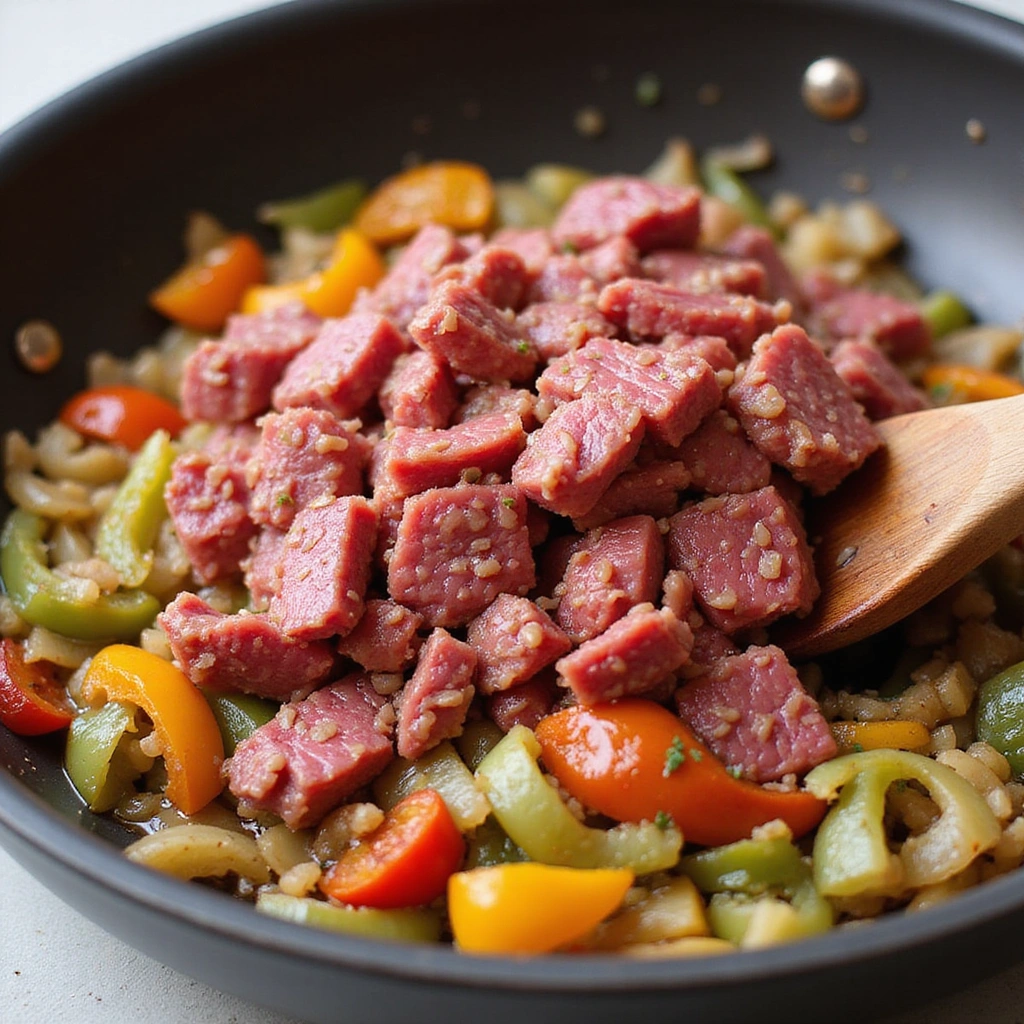
Once the onions and peppers are caramelized, add the diced corned beef to the skillet.
Break it up with your spatula, mixing well with the vegetables.
Let it cook for about 3-5 minutes until heated through and slightly crispy on the edges.
You’ll want to hear a satisfying sizzle as it cooks.
Step 4: Combine with Potatoes
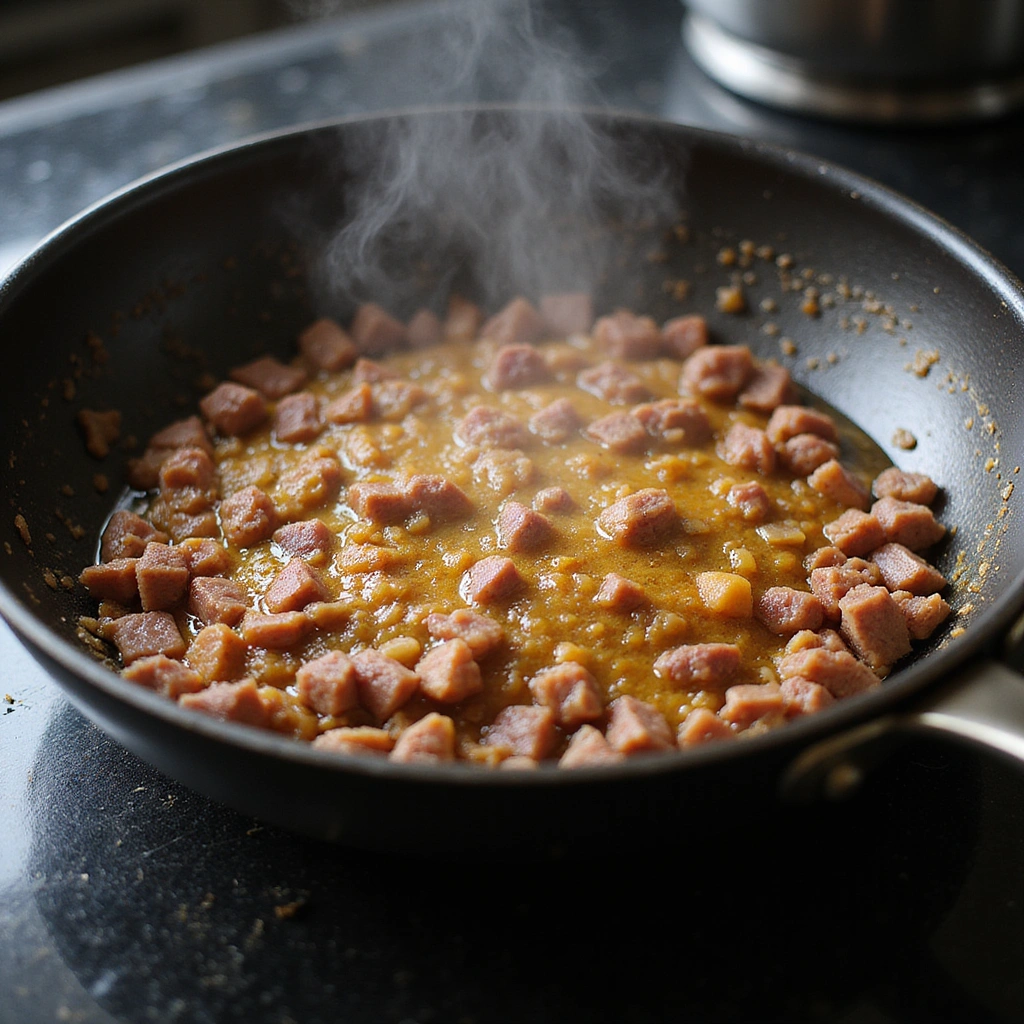
Add the parboiled potatoes to the skillet with the corned beef mixture.
Carefully fold them in, ensuring all components are evenly distributed.
Press down slightly to encourage browning on the bottom.
Let it cook undisturbed for 5 minutes to develop a crispy crust.
Step 5: Season the Hash
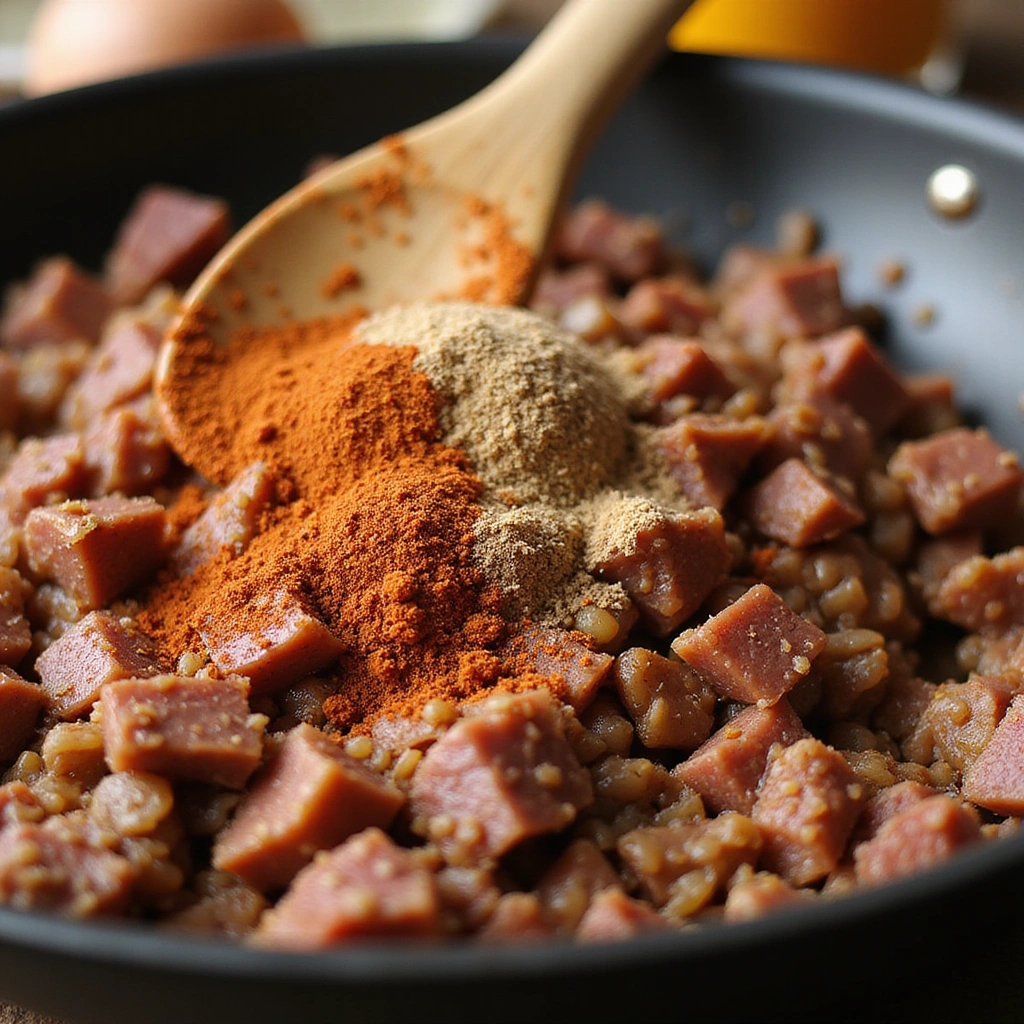
Sprinkle garlic powder, black pepper, and any additional seasonings over the hash.
Stir gently to incorporate the spices without breaking apart the crispy layers.
Taste a small portion to check for seasoning balance.
Adjust as needed, adding more pepper or salt if desired.
Step 6: Create Wells for Eggs
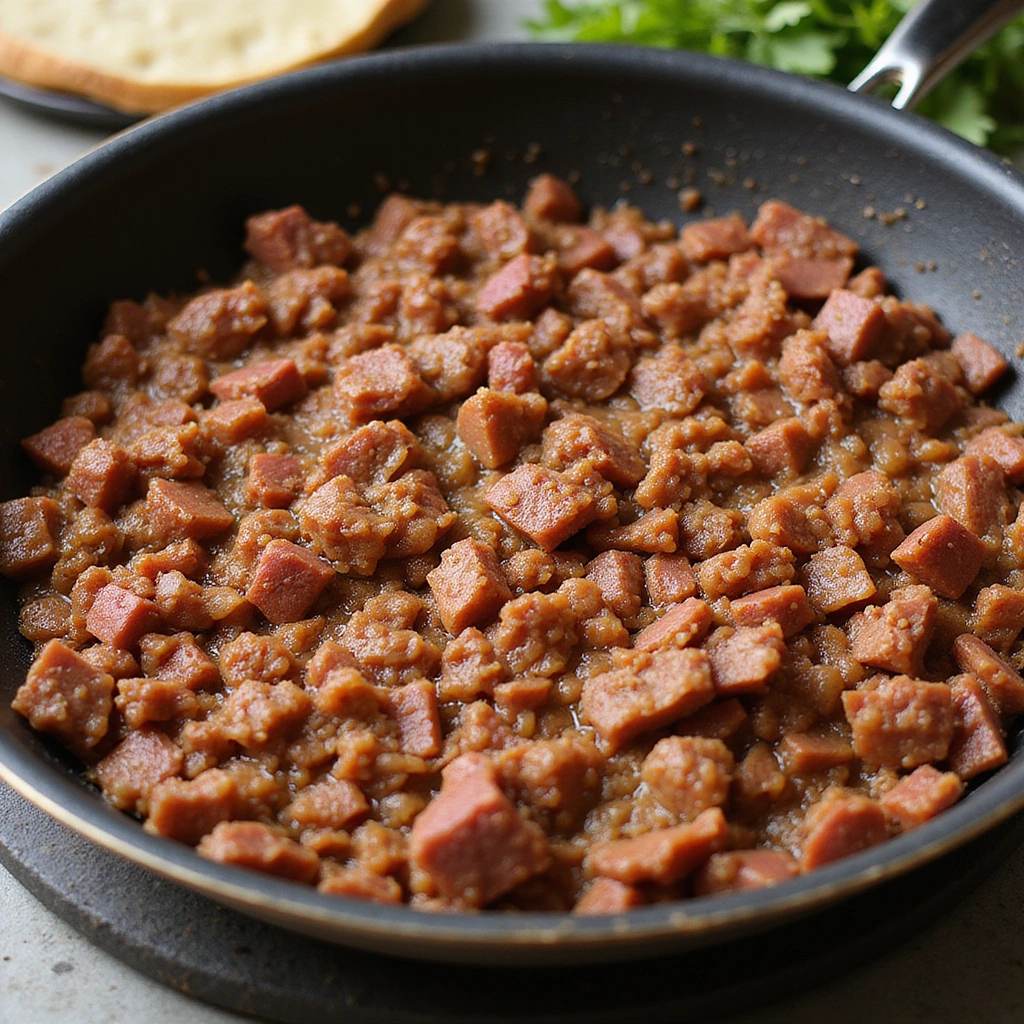
Using your spatula, create four small wells in the hash for the eggs.
Make sure they’re evenly spaced to allow for cooking.
This will help the eggs cook evenly and stay in place.
Prepare to fry or poach the eggs in a separate pan.
Step 7: Cook Eggs
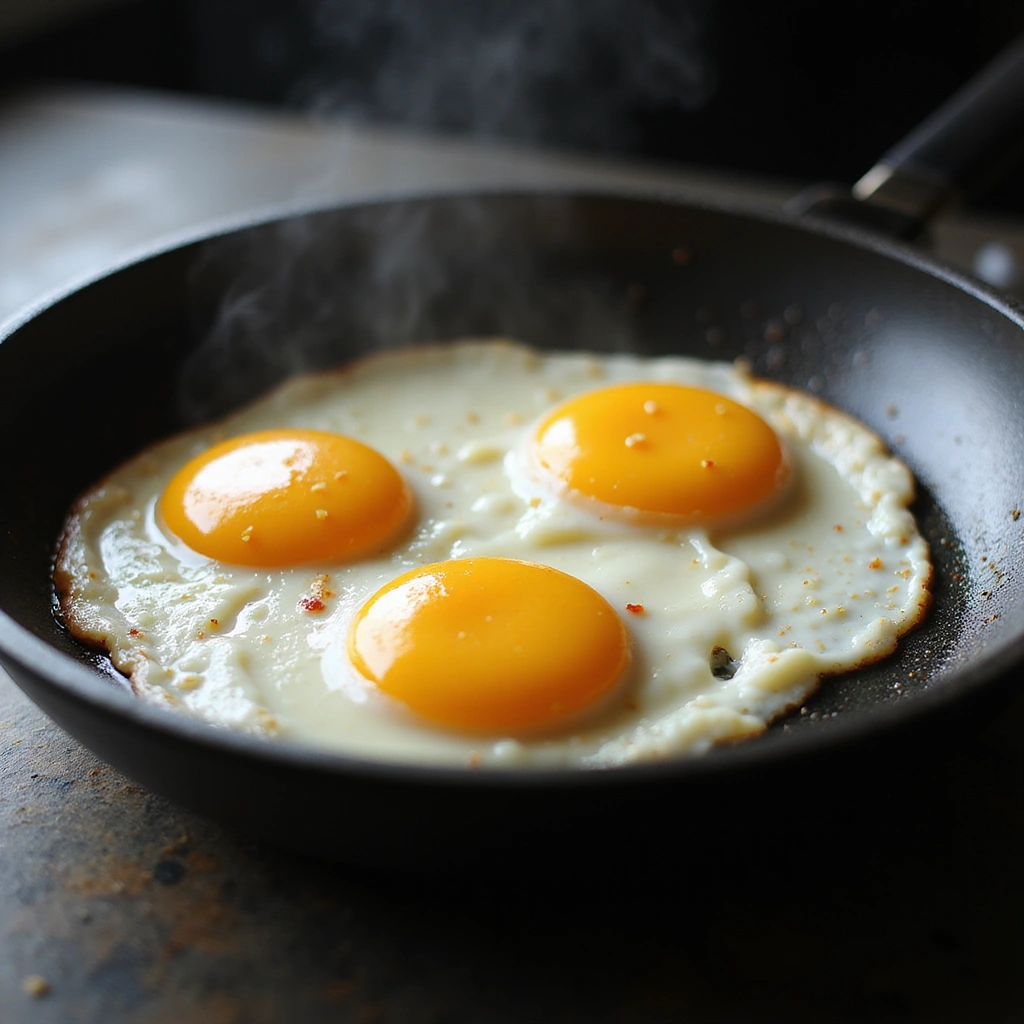
In a separate non-stick skillet, heat a bit of oil over medium heat.
Crack the eggs into the skillet, ensuring they don’t touch each other.
Cook to your preferred doneness; sunny-side up or over-easy are great options.
The whites should be set while the yolks remain runny, if desired.
Step 8: Serve and Garnish
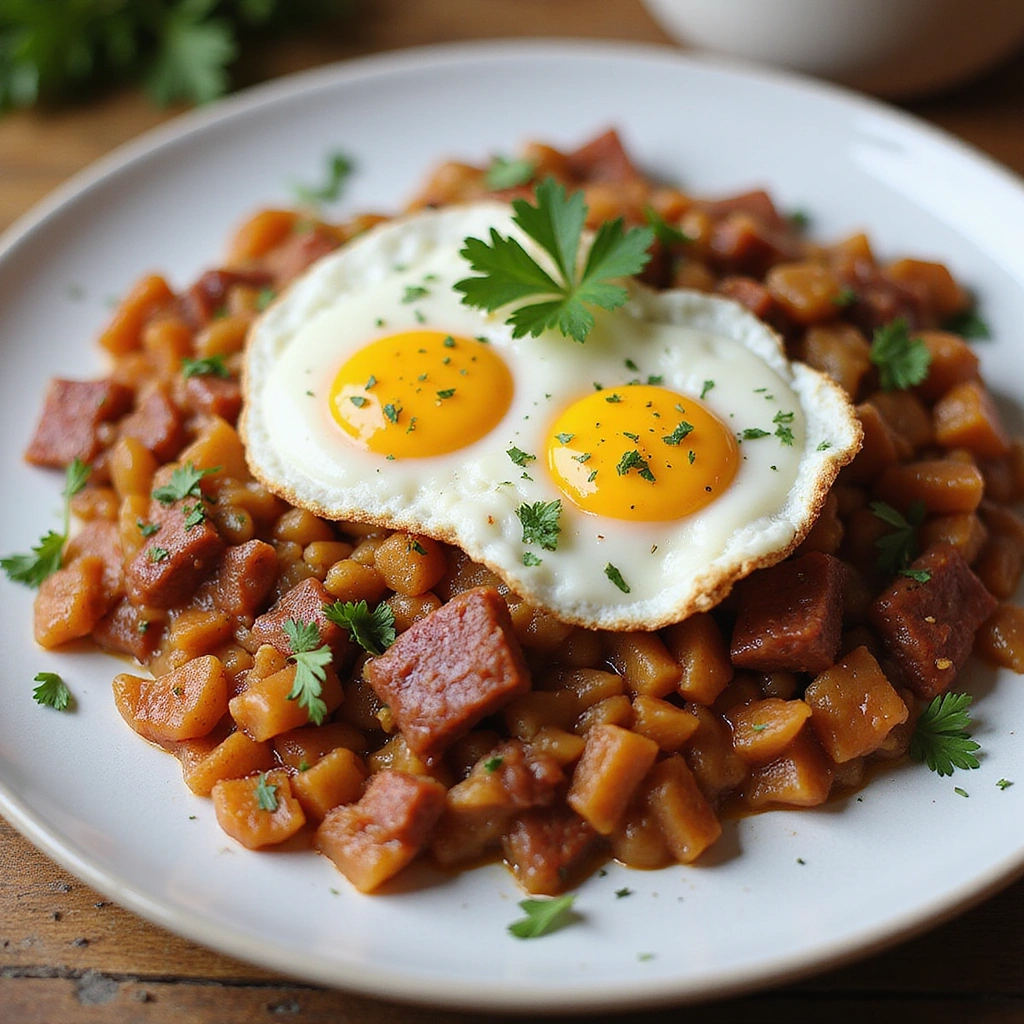
Once the eggs are cooked, carefully place one egg on each well of the corned beef hash.
Garnish with freshly chopped parsley for a pop of color and flavor.
Serve immediately while hot, alongside toast or fruit if desired.
Enjoy the combination of textures and flavors in every bite.
Critical Timing and Temperature Guide
Cooking Onions and Peppers: Caramelize on medium heat for 5-7 minutes until soft and golden. Avoid high heat, as it can burn the vegetables and create bitterness.
Frying Hash: Cook the hash undisturbed for 5 minutes to develop a crispy crust. If it sticks, it may not be ready to flip.
Cooking Eggs: Fry eggs until the whites are set but the yolks are still runny, about 3-4 minutes. Avoid overcooking, as this will lead to a dry yolk.
Pro Tips for Canned Corned Beef Recipes Breakfast Savory Comfort Food
• Ingredient Selection: Use high-quality canned corned beef for the best flavor. Look for brands with minimal additives for a more authentic taste.
• Preparation Secret: Let the cooked potatoes cool slightly before adding to the skillet. This helps them achieve a crispy texture when fried.
• Temperature Management: Ensure your skillet is preheated before adding the ingredients for ideal browning and texture.
• Texture Enhancement: Utilize a spatula to press the hash down in the skillet, enabling better browning and a delightful crust.
• Flavor Layering: Incorporate fresh herbs like thyme or rosemary during cooking for an added depth of flavor.
• Make-Ahead Strategies: Prepare the corned beef and vegetables in advance, storing them separately in the fridge for up to 2 days before cooking.
• Restaurant-Quality Finishing Touches: Drizzle a little hot sauce or serve with a side of salsa for an exciting flavor kick.
• Equipment Optimization: If using a non-stick skillet, reduce oil to achieve a crispy texture without sticking.
Troubleshooting Common Issues
• Texture Too Dense: This can occur if the potatoes were overcooked or not given enough space to crisp up. Ensure to parboil just until tender and spread out the hash in the skillet for frying.
• Flavors Unbalanced: If the dish lacks flavor, it may need more seasoning. Taste during cooking and adjust with salt, pepper, or herbs to enhance the flavors.
• Burning on the Bottom: If the hash burns, it could be due to too high heat or not enough oil. Lower the heat and ensure adequate oil for frying.
• Eggs Overcooked: If your eggs turn out rubbery, reduce cooking time and monitor closely to achieve the desired doneness.
• Hash Sticking to Skillet: This can happen if the skillet isn’t hot enough. Preheat well and use enough oil to prevent sticking.
Variations and Regional Differences
• Irish Style: In Ireland, this dish often includes cabbage or root vegetables, adding a hearty twist that reflects traditional Irish cooking.
• Southwestern Style: Incorporate diced green chilies and spices like cumin for a zesty, southwestern flair that elevates the dish.
• Vegetarian Version: Substitute the corned beef with sautéed mushrooms or tempeh for a plant-based alternative that maintains the hearty feel.
• Modern Interpretations: Contemporary chefs may add unique toppings such as avocado or spicy aioli, keeping the classic elements while adding new flavors.
Food Science Behind the Recipe
• Maillard Reaction: This browning reaction occurs when proteins and sugars in the corned beef and potatoes react to heat, creating complex flavors and appealing aromas.
• Starch Gelatinization: The heat causes the starches in potatoes to absorb water and swell, resulting in a creamy interior that contrasts with the crispy exterior.
• Emulsification: The addition of fats, such as oil for frying, helps create a rich mouthfeel and enhances the flavors of the dish, binding the ingredients together.
Frequently Asked Questions
What’s the most common mistake people make when preparing canned corned beef? Not properly browning the ingredients can lead to a bland dish. Ensure your skillet is hot enough before adding the ingredients.
Can I prepare components of this dish in advance? Yes, you can dice the vegetables and corned beef a day ahead, storing them in the refrigerator until you’re ready to cook.
How do I adapt this recipe for dietary restrictions? Substitute corned beef with a vegetarian option like mushrooms and adjust seasonings accordingly.
What’s the best way to store and reheat leftovers? Store leftovers in an airtight container in the refrigerator for up to 3 days. Reheat in a skillet over low heat for best results.
Can I freeze this dish? Yes, you can freeze the cooked hash for up to 2 months. Thaw in the refrigerator overnight before reheating.
What wine or beverages pair best with this dish? A light-bodied red, such as Pinot Noir, complements the savory flavors without overwhelming the dish.
How can I scale this recipe up for a crowd? Simply multiply the ingredients while ensuring you have a large enough skillet or cook in batches to maintain crispiness.
What side dishes complement this recipe best? Fresh fruit or a side salad provides a refreshing contrast to the rich hash.
How do professional chefs elevate this dish for restaurant service? Elevating the dish often involves meticulous plating, garnishing with fresh herbs, and adding gourmet sauces for flavor enhancement.
Serving and Presentation Guide
• Traditional Presentation: Serve the hash in a rustic bowl with the fried eggs on top, garnished with chopped parsley. This homestyle presentation evokes a cozy breakfast feel.
• Modern Plating Ideas: For a contemporary look, use a white plate, artfully drizzling some sauce around the hash and placing the egg slightly off-center for visual appeal.
• Accompaniment Suggestions: Pair with crusty bread, pickles, or a light salad to enhance the meal’s freshness.
• Special Occasion Presentation: Serve on elegant dinnerware, and consider adding a sprinkle of smoked paprika for color, creating an upscale brunch experience.
Conclusion
The comforting flavors of canned corned beef hash are sure to warm your heart and please your palate.
I encourage you to give this recipe a try, whether for breakfast or a quick dinner.
It’s a delicious way to embrace the simplicity and joy of classic comfort food.
